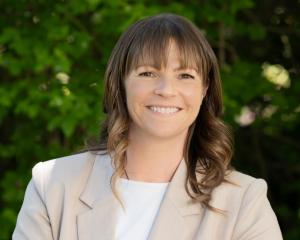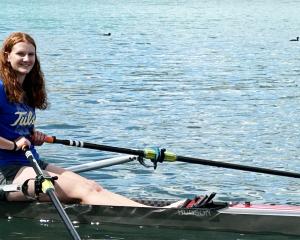When Carol Haig takes groups of young school pupils for a walk around the Clyde museum, she likes to make them stand in the middle of the building and close their eyes.
``I ask them to imagine what it was like in the olden days, when there were no houses, no trees, no cars - just bare land. And then someone will say - `but where were the computers, Carol?'.''
She breaks it to them gently that there were no computers, only manual work, hard toil and the hope of riches as those struck with gold fever established the town.
``You can see them eventually get it, as they go through the process. You can see they can imagine what it was like in the end.''
The exercise is just one of many Mrs Haig likes to do with visitors to the building that is the nerve centre of 13 buildings that make up Clyde Historical Museums.
They include the main museum building, built in the 1960s and previously the Vincent County Council head office, an old police lock-up behind the building, the old Clyde Railway Station and 10 historic buildings that make up the Briar Herb Museum complex, including the old railway goods shed.
It is those mud-brick, schist and wooden Briar Herb structures that in the end led to a project museum leaders hope will start soon - a feasibility study that will help determine the future of the museum buildings.
Five of the 10 Briar Herb structures have been assessed as earthquake-prone and the entire Briar Herb complex was closed to the public for that reason in 2014.
But other issues surrounding the museum were already causing concern before then.
With a dwindling and ageing committee and volunteer base, those operating the museum had gradually come to the realisation the complex needed new blood, a new approach and more formal expertise to take it into the future. Discussions and musings about the issue had been taking place for years. But the earthquake assessments made those discussions more urgent, and reports started to be done.
The first step was to create a museum collections policy, which has already been done.
A more detailed engineering assessment was then to be done, but when an application for a Lottery Environment and Heritage Grant was declined due to funds in that division being oversubscribed, the Vincent Community Board decided to go directly to the next stage of the project - a feasibility study (the Central Lakes Trust has indicated financial support, and it is hoped some Lottery Grants Board funding will still be available).
The $103,000 study will be done by Origin Consultants and has the backing of not only Clyde Historical Museums but also Te Papa, Heritage New Zealand, the Central Otago Heritage Trust, the Clyde business community and Historic Clyde Inc.
Clyde Historical Museums curator John Hanning said it was hoped the study would offer solutions to the issues faced, including options for earthquake strengthening, and how to establish a management and volunteer structure that was sustainable. The report is hoped to be completed by next August.
Mr Hanning and Mrs Haig, a museum committee member and co-ordinator of museum volunteers, have the credentials to speak of both the town's past and future: both have ancestors going back to the goldrush days.
Mrs Haig's great-great-grandfather Martin Marshall ran the town's medical hall (pharmacy) in 1865, and Mr Hanning's great-great-grandfather Joseph Hastie ran a bakery at the same time.
Both Mrs Haig and Mr Hanning say the pull to remain in their birthplace is all-consuming, and they are proud to help act as keepers of the district's history.
``There's always been that pull to the old hometown,'' Mr Hanning said.
``You feel a sense of home,'' Mrs Haig said. ``And I feel a real responsibility to protect it all. I think Clyde is actually lucky the new main road bypassed it, because it's meant things have been kept and protected in the old town. Clyde is unique in all of New Zealand because of its history and goldrush. It's like a living museum.''
Mrs Haig and Mr Hanning say that, on the one hand, many eyes will be on the museum feasibility study as it could have ideas and implications important in a broader sense for other small-town museums facing the same issues as Clyde.
But on the other hand, they believe the sheer number of museum buildings and the importance of Clyde historically makes it unlike any other area, and the study's findings will be of relevance mainly to Central Otago.
One key thing museum leaders are hoping the study will explore are ways and resources to better catalogue the museum's thousands of items, such as scanning documents and using cloud-based storage.
Meanwhile, Clyde volunteers continue to show locals and visitors around some of the museum collections and help with inquiries about families from generations past. As interest in genealogy increased nationwide and globally, more and more people were wanting to find out about their past, Mrs Haig said.
She remained proud of the exhibits and stories in the Clyde Historical Museums, such as an exhibition commemorating World War 1 anniversaries at present.
One of the exhibits on display, a letter from John Haig, a World War 1 soldier, was an example of the poignancy of days gone by, she said. Writing to his mother and father
in 1916 he said: ``If one comes through this war he is a marvel, as they are at it all the time, but 'tis surprising how many shells are wasted. It has been a great bit of experience for anyone to go through and I can die satisfied in one way that is that so far I have played the game in the army and done all of what was asked of me.''
``Listen to those words,'' Mrs Haig said. ``Who can say that these days? That I've done `all of what was asked of me?' It's just incredible and so special to think of what those men did for all of us. It's very, very important.''























